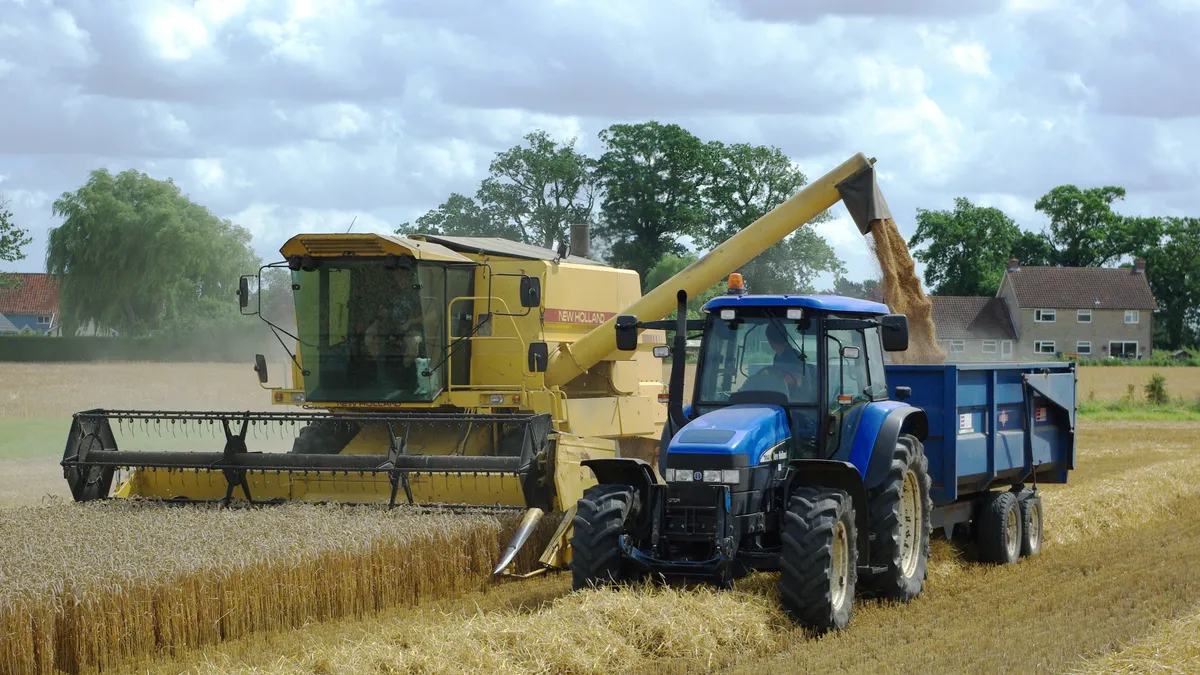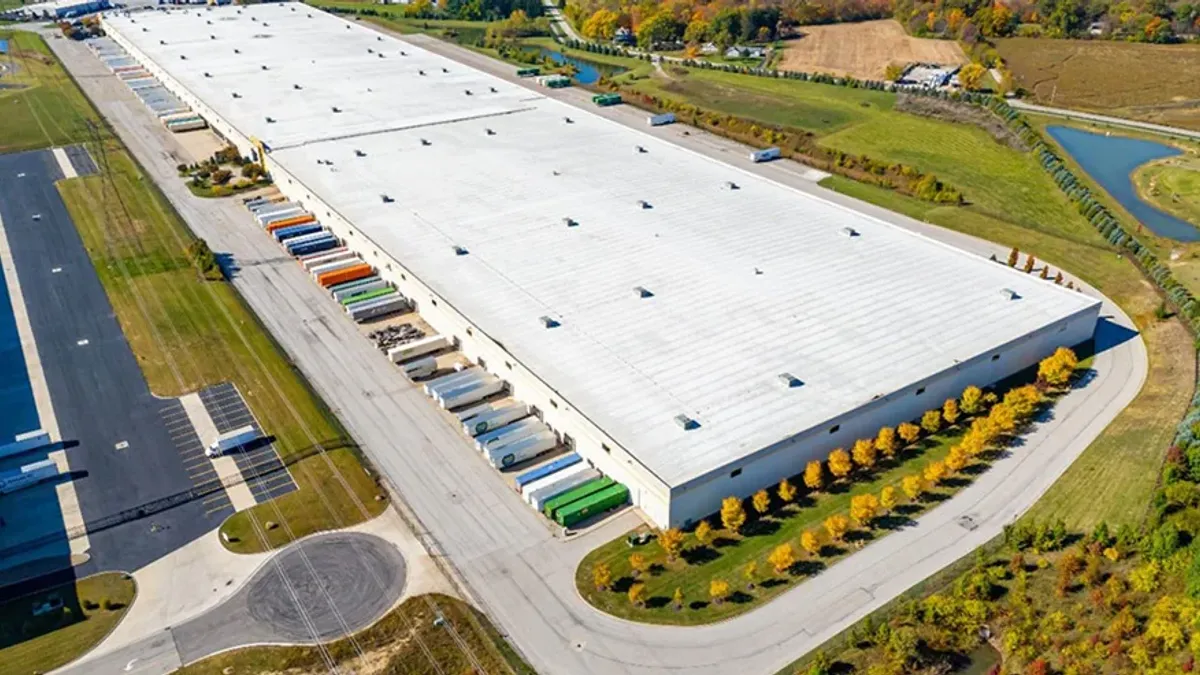Flood stage on the Mississippi River is 30 feet. But this summer it was hitting levels over 40 feet, topping out at more than 45 feet in early June. The river, a main artery for agricultural trade, was impassible with multiple lock closures up and down the waterway.
Flooding this spring along the Missouri River resulted in service disruptions for BNSF and Union Pacific — the two largest Class I railroads.
Understanding how flood or drought affects the food supply can help supply chain managers better prepare for inevitable events. At the time of the Missouri River flood, Reuters reported the value of lost agricultural products, including livestock, could be near $1 billion in Nebraska alone.
Information on how food moves across the country could help lessen the impact of these events, but it turns out, there isn't very detailed information on county-level food flow. That is, until a group of researchers at the University of Illinois at Urbana-Champaign tackled the subject.
Their project started with wanting to understand how food moves throughout the country and how extreme events, like droughts and floods, and long term unsustainable water use impact the flow of food, according to Megan Konar, an assistant professor of civil and environmental engineering at University of Illinois at Urbana-Champaign.
"But then we realized that we didn't really know much about ... how [food supply chains] were operating within the [counties], so we sort of set out to see if we could estimate that," Konar told Supply Chain Dive in an interview.
Konar and her students decided to estimate food flow between every county pair in the United States.
The final map of food flow created by the researchers

After the numbers were crunched and the map was made, California stood out.
"A lot of it's just due to the fact that they have a huge agricultural production center in California," Konar said. "They have Central Valley, which is very productive, it's known as the fruit and vegetable basket of the U.S. and even of the world."
The state also has two of the largest ocean ports in the country; Los Angeles and Long Beach.
California has large population hubs, so a large amount of the food flows within the state from these origin destinations to manufacturing, processing or final sale. Part of this is also the result of how counties are laid out in California.
"Some of it is mechanics because the counties in California and in the west coast, in general, are just a lot bigger than counties in the eastern part of the US," Konar said. "So say for example, like Iowa, produces a lot of food, but then that food production is split across, say, 100 counties when food production in California will be split across 20 counties."
The map revealed other points of interest.
Lines from across the county connect back to the tip of the Mississippi River and highlight the importance of overland ports. The connection between Niagara County, New York and Erie County, New York lights up on the East Coast.
"It's an international trade pathway between the U.S. and Canada," Konar said. It shows food flowing from Canada into the U.S. and food from around the U.S. being shipped into Canada.
But here's the thing: This still isn't what the food flow in the U.S. actually looks like.
This map connects county pairs with a straight line, the shortest distance between the two points. The national food supply chain uses highways, waterways and rail hubs to get food where it needs to go. Understanding what infrastructure is used to move food is vital, Konar said, citing the American Society of Civil Engineer's report grading the nation's infrastructure as a D+.
"Food supply chains are really reliant on this infrastructure," she said. "So we can think of degraded infrastructure as a risk to these food supply chains. And that's why I think it's important to know what infrastructure is supporting our food system."
How they mapped the flow
The effort started with data collection using information from the Freight Analysis Framework, which Konar said gave them a coarse look at food movement. The dataset provides information on commodity flow between states and major cities. But they wanted a finer resolution — down to the county level.
The researchers then collected census numbers, data from the U.S. Bureau of Economic Analysis, and agricultural information including county-level information on goats, cows, coffee, chickens, hogs, sheep, gas stations, bakeries, fruit, turkey, ice cream manufacturing and soft drink manufacturing.
This information was used to build an algorithm using supervised machine learning to help estimate food flow, Konar said.
What's next?
Konar's team has mapped the beginning and the end of the food flow. Now, she wants to understand what's happening in the middle to get a better picture of the role and demands of the infrastructure it travels on.
Konar was a recipient of a National Science Foundation CAREER Award earlier this year which will help fund the next leg of data digging.
The mapping project looked at seven food commodities. Konar's new research will look at the same seven commodities but across three modes of transport — rail, highway and waterway — for a total of 21 relationships that will be measured using similar machine learning methods as the previous research.
"We're going to try to add realism in terms of the pathways like the road, the rail and the waterway pathways that the food would be moving," she said.






















